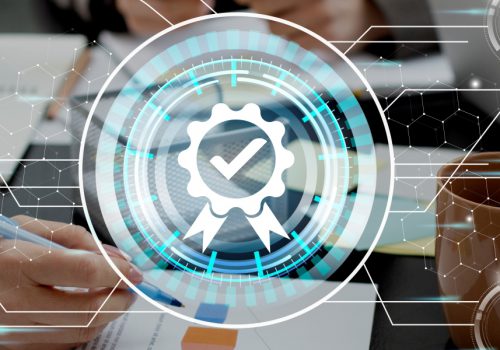As the landscape of the medical devices industry continues to evolve, it is increasingly essential to be able to recognize and understand the nuances of regulatory standards and management systems going forward.
Both the European Union Medical Device Regulation (EU MDR) and ISO 13485 play crucial roles in ensuring the safety, quality, and effectiveness of medical devices.
What is EU MDR?
EU MDR is a regulation that governs the manufacturing, marketing, and distribution of medical devices within the European Union (EU). The EU MDR was adopted in 2017 and replaced the previous Medical Device Directive (MDD). It became fully applicable on May 26, 2021.
The primary goal of the EU MDR is to ensure the safety and performance of medical devices while enhancing patient and user safety. It introduces stricter regulations and requirements for medical device manufacturers, importers, distributors, and other stakeholders involved in the supply chain. The regulation applies to a wide range of medical devices, including implants, diagnostic equipment, surgical instruments, and software used for medical purposes.
Important features of the EU MDR include:
- Expanded scope – The regulation broadens the definition of medical devices to include previously unregulated products, such as certain aesthetic devices and cleaning products.
- Risk-based classification – Medical devices are now classified into four categories based on their potential risks:
- Class I – Low-risk medical devices
- Class IIa – Low to medium-risk medical devices
- Class IIb – Medium to high-risk medical devices
- Class III – The highest-risk medical devices
- Stricter clinical evidence requirements – The EU MDR emphasizes the need for comprehensive clinical data, including evaluations and post-market follow-up, to demonstrate device safety and performance.
- Unique device identification (UDI) – A UDI system is mandated, enabling better traceability and monitoring of devices throughout their lifecycle.
- Strengthened post-market surveillance – Robust surveillance systems are required to actively monitor device performance and report incidents to authorities.
- Notified bodies and scrutiny procedures – Notified bodies face stricter requirements and scrutiny to ensure competence and independence in assessing and certifying devices.
- Increased transparency and accessibility – The establishment of EUDAMED enables public access to device information, including UDI data and certificates.
- Collaboration among member states – The EU MDR fosters collaboration among member states for a harmonized approach to medical device regulation and market access.
These key features of the EU MDR aim to strengthen patient safety, improve the quality and reliability of medical devices, and enhance transparency and regulatory oversight throughout the lifecycle of medical devices in the European Union.
What is ISO 13485?
ISO 13485 is an international standard for quality management systems specifically designed for the medical device industry. It provides the requirements for an organization involved in designing, developing, producing, installing, and servicing medical devices.
The key aspects of ISO 13485 are:
- Quality Management System (QMS) – ISO 13485 outlines requirements for establishing and maintaining a strong QMS to consistently meet customer and regulatory requirements, address risks, and ensure device safety and good performance.
- Management responsibility – In ISO 13485, the top management’s leadership is highly involved in establishing and maintaining the quality management system and resource management.
- Resource management – ISO 13485 demands ensuring the availability, competency, and appropriate allocation of the necessary resources.
- Product realization – Product realization in ISO 13485 encompasses the processes from design and development through production, verification, validation, and delivery of medical devices, ensuring they meet regulatory and customer requirements.
- Measurement, analysis, and improvement – ISO 13485 covers data collection, analysis for performance evaluation, identification of improvement opportunities, and implementation of preventive actions, all aimed at enhancing the effectiveness of the quality management system.
What is the Relationship between ISO 13485 and the EU MDR?
Although related, ISO 13485 and the EU MDR are two different frameworks whose relationship can be best understood when considering conformity assessment.
It is important to note that while ISO 13485 certification is not a legal requirement for medical device manufacturers to place their products on the European market, it can greatly facilitate compliance with the EU MDR and not only. ISO 13485 also offers many benefits such as enhances quality management, risk management, continues improvement, competitive advantages, etc. Manufacturers are still required to meet the specific regulatory requirements outlined in the EU MDR and implement a compliant QMS based on ISO 13485.
ISO 13485 helps medical device manufacturers to comply with the EU MDR in several ways:
- From design through post-market surveillance, ISO 13485 offers a systematic method to controlling risks associated with medical devices throughout their entire lifespan, assisting in ensuring their efficacy and safety.
- ISO 13485 assists to ensure the quality and traceability of the materials and components used in medical devices by establishing the criteria for evaluating and selecting suppliers and subcontractors, as well as for monitoring their performance.
- By defining the requirements for documentation and records, such as technical files, clinical evaluation reports, and post-market surveillance plans, ISO 13485 assists notified bodies and authorities in demonstrating compliance with the EU MDR and facilitating audits and inspections.
- ISO 13485 supports the implementation of a continuous improvement culture by requiring regular reviews and audits of the QMS, as well as corrective and preventive actions. This helps to enhance the quality and performance of medical devices and to adapt to changing customer and regulatory needs.
Being a valuable tool for medical device manufacturers, ISO 13485 provides a strong foundation for complying with the EU MDR. Moreover, organizations can completely align with the EU MDR requirements by implementing additional required processes and procedures.









